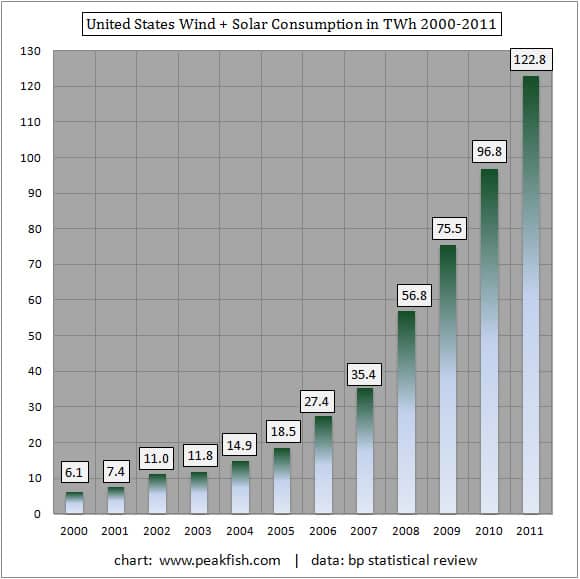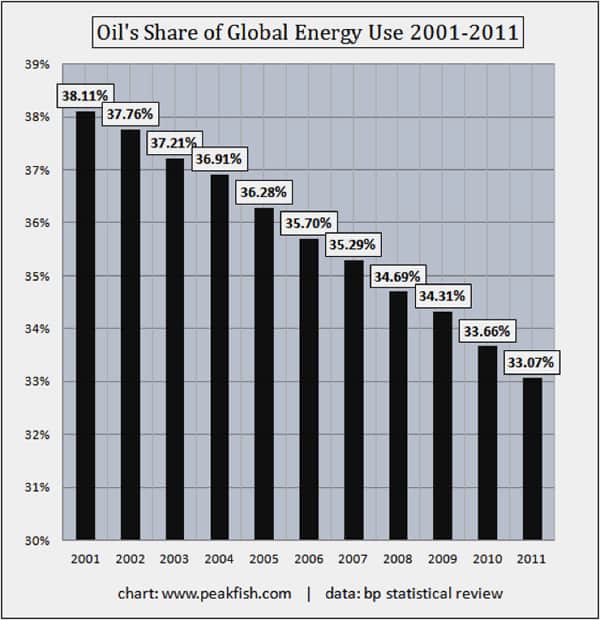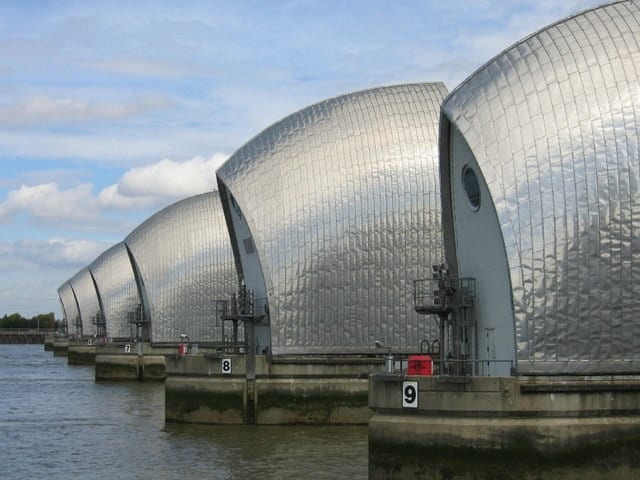Flood myths are common to human culture. Swollen rivers, tidal storms, and tsunamis make their appearance frequently in literature. But Hurricane Sandy, which has drawn newly etched high-water marks on the buildings of lower Manhattan (and Brooklyn), has shifted the discussion from storytelling to reality.
Volatility in climate has drawn the attention of policy makers for a decade. But as so often is the case, a dramatic event like superstorm Sandy – the largest storm to hit New York since the colonial era – has punctured the psyche of the densely populated East Coast, including the New York-Washington, DC axis where U.S. policy is made.
Not surprisingly, in the weeks since the historical hurricane made landfall, new attention is being paid to the mounting costs that coastal world megacities may face.
Intriguingly, however, this new conversation about climate, energy policy, and America’s reliance on fossil fuels comes after a five-year period in which the U.S. has dramatically lowered its consumption of oil and seen an equally dramatic upturn in the growth of renewable energy. America’s production of CO2 in the first quarter of 2012 fell to twenty-year lows. The country is using less coal, increasing its use of natural gas, and (like the rest of the OECD) is seeing its transportation demand migrate from cars and trucks to rail. While Europe is often cited as being at the forefront of renewable power, the U.S. has also started to produce very strong growth rates for wind and solar power:
The combination of declining oil use and a greater reliance on the global powergrid is going to shape energy and climate policy. Especially at a time when the concerns of climate change – or, rather, rising seas and the greenhouse dangers of fossil fuel dependency – are being increasingly raised. This will make for a rather muddled and complex array of diverging policy initiatives.
Moreover, as the oil-based economy (which was harder to meter) gives way to the electricity-based economy, policy makers will find there are more levers to shape energy demand in their economies. The Oil Age was a more natural fit for free-spirited individualism. The Electricity Age will see an era more comprehensively dominated by policy, as the powergrid becomes the mechanism for governments to shape the future of energy demand.
Rebounding to the Grid
The oil age went into decline roughly ten years ago.
Oil’s share of total global energy demand, which had been on the rise since the 1930s, peaked in the mid-1970s but held steady for over twenty years until the new millennium. But starting early last decade, through a combination of oil’s repricing and the industrialization in the Non-OECD, oil’s market share in the global energy mix retreated.
This decline of oil in the global economy explains perfectly why the weak rebound since the 2008 financial crisis has grown along the contours of the powergrid. It’s not just the United States. In Japan, and especially in Europe, oil use has continued to decline right through “the recovery,” as increasing numbers of car drivers are taken off the road, as jet travel declines, and as trucking has given way to higher deployment of freight rail.
However, this opens up a number of new constraints as well as new opportunities, because while there is high growth in solar and wind power, the growth of global electricity is largely driven by coal. That means awareness of coal’s role is going to widen among populations, and governments are going to be drawn into action over coal.
Carbon Taxes, Renewable Portfolio Standards, and Feed-In Tariffs
Global coal markets have recently sputtered in the face of slower growth in China as well as the rise of natural gas in the United States, which has dislocated consumption of its own coal. If glanced at quickly, this looks like an interruption in the supertrend. Alas, no such interruption is taking place.
Instead, the coal which Americans are no longer consuming is being exported to the rest of the world. Even Europe is taking greater volumes of U.S. coal, which in 2012 is on pace to see the highest level of exports in U.S. history.
But a more important phenomenon to understand regarding global energy consumption is that much of the upswing in Asian coal demand over the past decade, especially in China, is really just an offshoring of OECD manufacturing capacity. In other words, an increasing proportion of goods purchased by Westerners since the year 2000 is the result of goods made in Asia. And these goods are made in factories powered by coal-fired electricity generation. Clothing, appliances, electronic devices – yes, iPhones, too – are made in facilities powered by coal.
This is why, as policy is increasingly driven either by concerns about climate, increased distaste for dependency on fossil fuels, or both, the clamor for carbon taxation is going to grow.
In a recent essay, Forget Kyoto: Putting a Tax on Carbon Consumption, the author takes note of the emerging emphasis on the global trade of energy use:
China’s phenomenal economic growth has been based on exports, notably of energy-intensive goods, from steel and petrochemicals to a host of manufactured products. These have been bought largely by the U.S. and Europe, which together account for nearly 50 percent of world GDP. It is carbon consumption that measures the carbon footprint and hence responsibility, not the carbon production in particular geographical areas. Yet remarkably the Kyoto framework does not take consumption into account. Instead it focuses on carbon production, and mostly in Europe, where deindustrialization and the collapse of the former Soviet Union make compliance with the targets easy.
Politically speaking, carbon taxation has been a very tough sell, especially in the United States. Interestingly, there have been trial balloons since the election that the Obama Administration may even tie together (or try to tie together) new carbon taxes as a way to lower the U.S. budget deficit. That, too, is unlikely to have much political appeal, though it does signify the shift coming in the wake of Hurricane Sandy and this summer’s extraordinary drought.
However, there are interesting divergences about the effectiveness of carbon taxation among those who work in the areas of energy and climate policy.
Chris Nelder, writing in Smart Planet, Why America Needs a Feed-in-Tariff, makes the case that a carbon tax policy will not necessarily spur construction of renewable energy. Essentially, if getting renewable energy infrastructure built is the ultimate goal shared by both climate policy and energy policy, then why not pursue a national FiT (feed-in tariff), of the kind deployed in Europe?
Given the obvious success of FiTs as a policy tool in Europe, one must wonder why the U.S. has not embraced them. Germany already tried all the incentives that we’re using in the U.S., such as aspirational targets like renewable portfolio standards (RPS), rebates, and low-interest loans, and eventually turned to FiTs because they proved to be far more effective, simple, low-cost, and efficient.
But while it’s true that growth of wind and solar power is already growing at a very strong rate in the U.S. (as discussed previously), it’s not clear this will continue at the same rate.
California’s RPS (renewable portfolio standard) has triggered the construction of a great deal of new utility-grade solar power. However, this is small in comparison to California’s overall energy challenge, as it sees its own dependency on out-of-state power supply continue to expand. As I have addressed previously, California’s energy production from all sources is at 50-year lows. This comes at a time when, just as in the rest of the country and the world, transportation demand is switching over from cars and trucks to the grid as light rail is built out in its cities.
New Energy, Climate, and Urban Infrastructure
(image: Thames Flood Barrier, Greater London, UK)
Western cities are aging, and the forecast for rising sea levels may hold true regardless of any climate policy. In a recent post, Roger Pielke Jr notes that mitigation of rising sea levels through aggressive CO2 reduction may not change the current trajectory all that much:
One of the more reasonable discussion points to emerge from efforts to link Hurricane Sandy to the need to reduce carbon dioxide emissions focuses on the role that future sea level rise will have on making storm impacts worse. Logically, it would seem that if we can "halt the rise of the seas" then this would reduce future impacts from extreme events like Sandy. The science of sea level rise, however, tells us that our ability to halt the rise of the seas is extremely limited, even under an (unrealistically) aggressive scenario of emissions reduction.
If cities like New York are compelled instead to construct tidal barriers, and other coastal cities in the U.S. follow, then changes in global energy consumption and in the public's perception of climate issues may see governments drawn in more closely than ever before to such policy making.
After all, the construction costs for mitigation through infrastructure will come through state and federal partnership. Indeed, the discussion about tidal barriers for New York has already begun. Given the extent of recent flooding, this is no surprise. And subsequent storms will only push such initiatives along further.
The New Policy Era
The decline of oil’s share in the global economy marks the end of a kind of free-ranging era in which individual discretion over energy use reached spectacular heights. Cheap oil gave rise to cities such as Los Angeles, where the freedom to drive all distances was a luxury enjoyed by most people. It’s not surprising that the cultural adjustment to a new era, where individual choice in energy use will be redefined, is proving cantankerous.
Moreover, as new oil supplies emerge from domestic American sources, the dream of resurrecting this cheap oil era will no doubt come back around several more times. But none of these new resource plays will change the trajectory of global oil supply much, nor will they lower the price of oil. So far, new oil supply mostly offsets declines elsewhere – but at substantially higher marginal cost. This should now be clear.
In Part II: Investing Strategies for the New Energy Era, we take a look at some of the risks but also opportunities that will present themselves to investors, as the global powergrid rises and comes under heavier scrutiny from government regulation.
While renewable energy is growing almost exponentially, coal still remains the global anchor for many of the most important electricity networks, especially in the developing world. The inevitable switch to the powergrid will draw two competing forces: 1) massive new investment, with many losers and winners, and 2) the attention of governments who will see the grid as a way to implement climate policy and to raise revenue.
Click here to read Part II of this report (free executive summary; enrollment required for full access)
This is a companion discussion topic for the original entry at https://peakprosperity.com/the-new-future-of-energy-policy/


